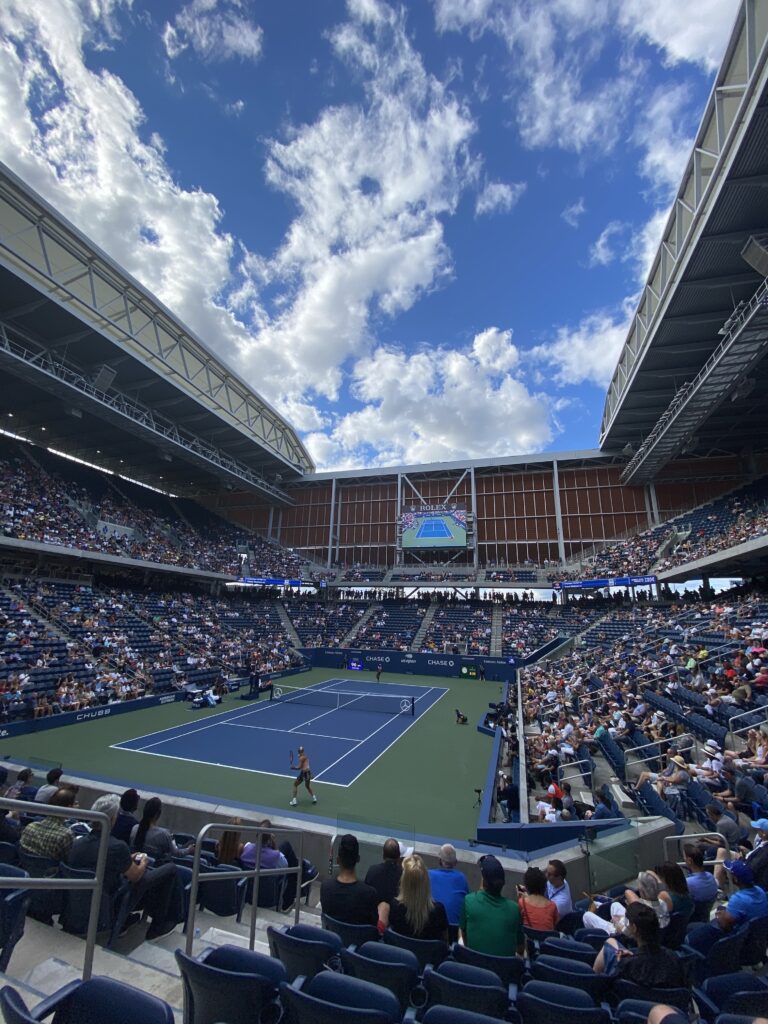
A story from the U.S. Open:
It’s the first round of the tournament, and I’m watching Reilly Opelka, a 6’11’’ American with a massive serve. (The fastest I saw him serve: 141 mph.) On one point, he serves just a little wide, and there’s that familiar call from the umpire: “Out!” He hits his second serve (something merely around 105 mph), and a rally ensues. Another ball goes just beyond the baseline. Again, that familiar call: “Out!”
Except that this time, I’m looking around, and can’t figure out where the voice is coming from.
There’s the umpire in their chair, but they’re not in position to make a call like that. There are the ballboys, but they don’t make calls like this. (Some are teenagers! The winner of this match will make $115,000 — there’s no way the U.S. Open would let them make these calls, right?)
It happens again a few minutes later, a male voice yelling “Out!” just after the ball misses the line. But again, I can’t figure out where it’s coming from.
Naturally, I turn to Google, and there’s the answer:
NEW YORK, Sept 3 (Reuters) – Ash Barty, the No. 1 seed at the U.S. Open, watched on match point as her opponent’s backhand sailed long on Thursday, prompting the familiar sound of a linesman yelling, “Out!”
There was no line judge, however. The call was a recording, triggered after an advanced system of cameras known as “Hawk-Eye Live” tracked the ball until it landed out of bounds.
For the first time, the tennis major has installed electronic line-calling on every court, replacing human judges who were responsible for determining whether, say, a serve traveling at 140 mph touched a line the width of a ruler.
At first, it feels a little strange. Tennis has always had these moments of confrontation between the players and umpires. (Go to YouTube and search, “You cannot be serious.”) So to lose that felt initially like losing a little part of the game.
But the more I watched — and I saw matches on Tuesday, and then again Friday — the more I came to appreciate the robot umpires. Some of these balls were hit so hard, and so precisely, that it felt impossible for any human to actually know whether they landed in or out. On Friday, I sat just a few rows up from the baseline,, and couldn’t tell if several shots were in and out — they were simply too close to call.
Things change, and that’s OK. So often, we get used to the manual way of doing things — taking on specific tasks, because it’s the only way to do so, until the moment when we find a way to do things faster and more effectively. It’s hard to embrace change, but I know for me, when I find a way to get faster at my job, I try to take advantage of it. (After all, there are only so many hours in the day, and every hour I waste on manual tasks is one I could be using to help a client.) Sometimes, that means finding a calendar tool the help me speed up the process of booking a meeting. Sometimes, that means using tools like Zapier to automate previously-manual tasks. And in the future, it might mean hiring people to take on work that used to be central to my job.
What are the essential tasks that only we can do, and what are the things that can be automated? At the U.S. Open, I got an answer to that question — and in the end, really liked what I saw.
———
I took that photo at the Angie Kerber-Sloane Stephens match at Louis Armstrong Court.
